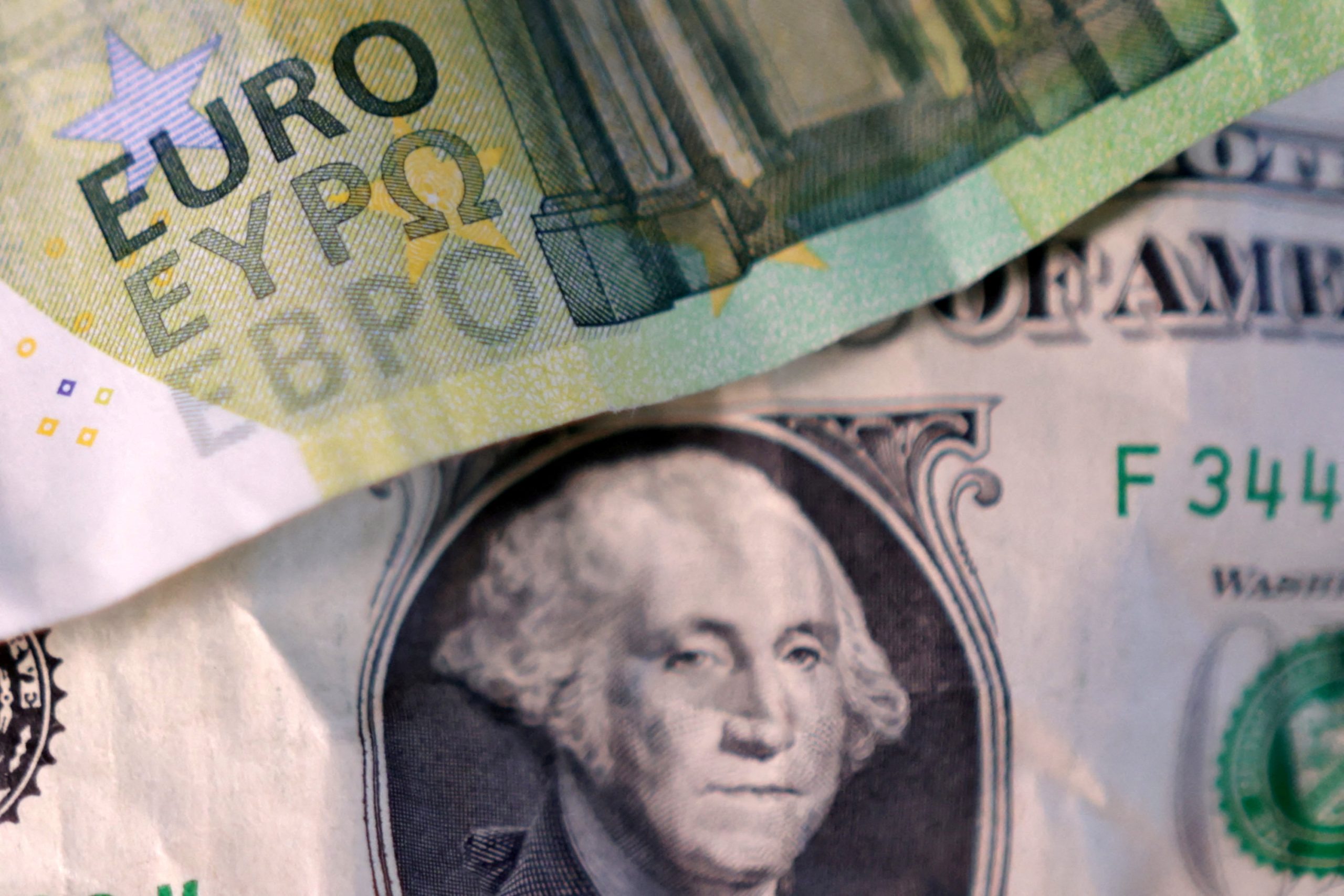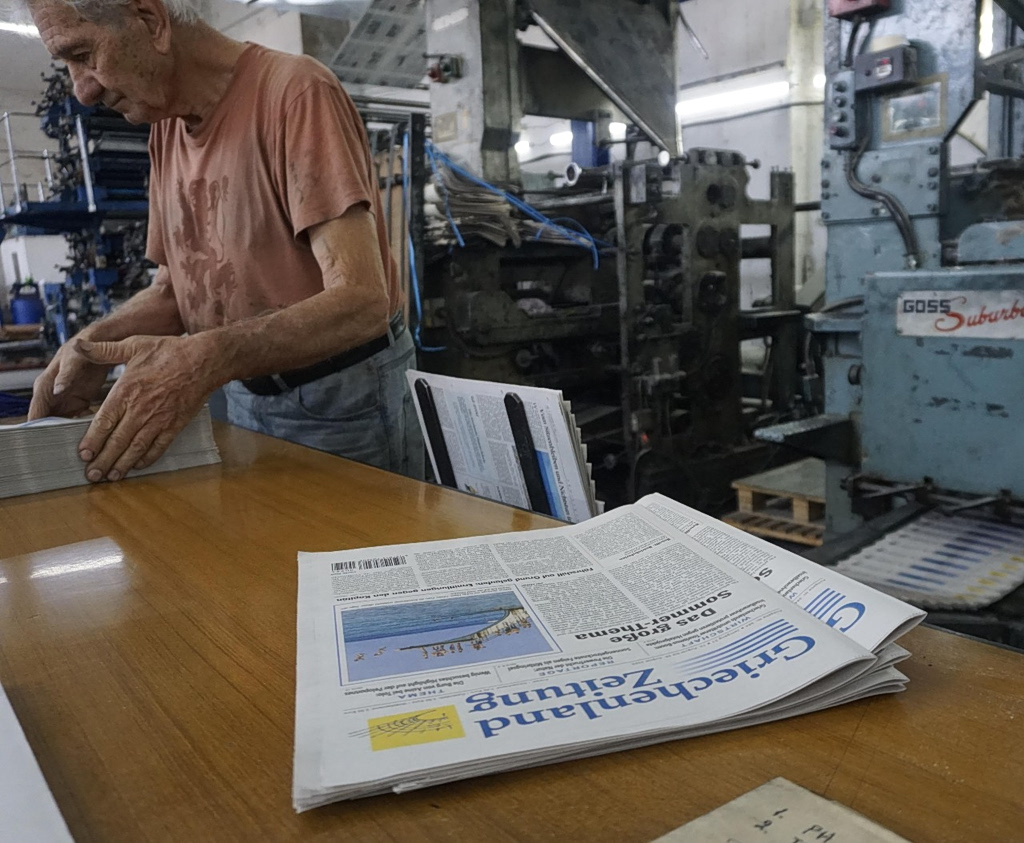The euro is proving the surprise beneficiary in the aftermath of U.S. President Trump’s announcement of sweeping trade tariffs late on Wednesday as investors pull out of risky assets and out of the dollar, ING analyst Chris Turner says in a note. The “alternative liquidity offered by the euro” as investors pull out of the dollar is the likely reason behind the euro’s gains. This is despite a potentially substantial hit to the eurozone economy from the tariffs. The euro has even held its own against the safe-haven yen, he says. The euro falls 0.4% to $1.1013, having hit a six-month high of $1.1148 on Thursday, according to FactSet. ( emese.bartha@wsj.com )
EUR/USD’s Weekly Close Above Ichimoku Cloud to Signal Further Strength, Chart Shows
0741 GMT – EUR/USD’s close above the Ichimoku cloud this week would signal further strength in the coming months, based on the weekly chart, says Quek Ser Leang of UOB’s Global Economics & Markets Research in a report. The currency pair has clearly broken above resistance at the top of the weekly cloud this week, and a weekly close above the cloud would confirm the breakout, the markets strategist says, adding that to sustain the bullish momentum, EUR/USD must hold above the cloud. On the upside, the resistance zone is pegged at 1.1215-1.1230, the strategist adds. EUR/USD edges 0.2% lower to 1.1034. ( ronnie.harui@wsj.com )
Sterling Falls Further Versus Euro After Tariff Announcement
0738 GMT – Sterling extends Thursday’s fall against the euro, hitting a 10-week low in the wake of U.S. President Trump’s announcement of sweeping trade tariffs late Wednesday. This sparked massive moves across financial markets on fears about the economic impact. ING’s Chris Turner says sterling’s falls are due to the euro having better liquidity during a time of substantial volatility. It also reflects investors changing their previous view that U.K. interest rates would stay higher relative to other major economies. “This may be a dominant theme in the near term,” Turner says in a note. The euro rises 0.4% to a high of 0.8474 versus sterling, according to FactSet. Sterling also turns lower against the dollar after sharp gains Thursday, last down 0.4% at $1.3049. ( jessica.fleetham@wsj.com )
Dollar Stays Weak After Tumbling Following Tariff Announcement
0658 GMT – The U.S. dollar remains weak after the DXY index slumped to a six-month low on Thursday following President Trump’s announcement of sweeping tariffs. This prompted huge concerns about the impact on the U.S. economy. Investors now await U.S. jobs data at 1230 GMT for signs of how the labor market fared just ahead of the tariffs. “The erratic nature of U.S. trade policy undermined investor confidence,” IG analysts say in a note. This has sparked fears of “a massive reallocation of capital away from U.S. markets,” they say. The DXY dollar index falls 0.2% to 101.915, having hit a low of 101.267 on Thursday. ( jessica.fleetham@wsj.com )
Dollar May Trade With Moderate Upward Bias Vs. Asian Currencies on U.S. Tariffs
0151 GMT — The dollar is expected to trade with a moderate upward bias versus Asian currencies on U.S. tariffs, though restrained by a relatively stable USD/CNY, Goldman Sachs’s research team says in a report. GS notes the U.S. tariff announcements were more sweeping than expected. “Given the size (of) the tariffs, external environment and starting level, we think THB will be one of the most vulnerable currencies in Asia,” the bank says. Also, “recent initiatives in Indonesia have raised investor concerns, and hence we think the IDR may continue to be under pressure,” GS says. Other currency pairs such as USD/KRW, USD/TWD, USD/SGD and USD/MYR should also trade higher, it adds. ( ronnie.harui@wsj.com )



